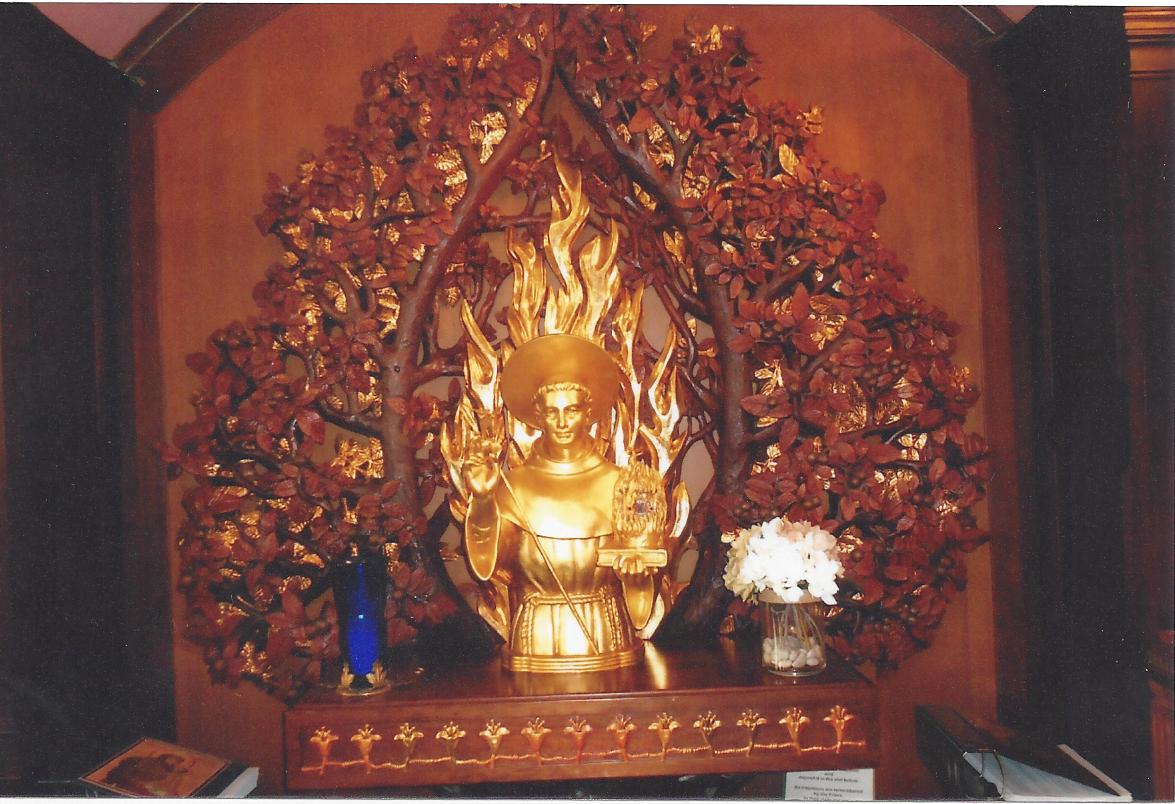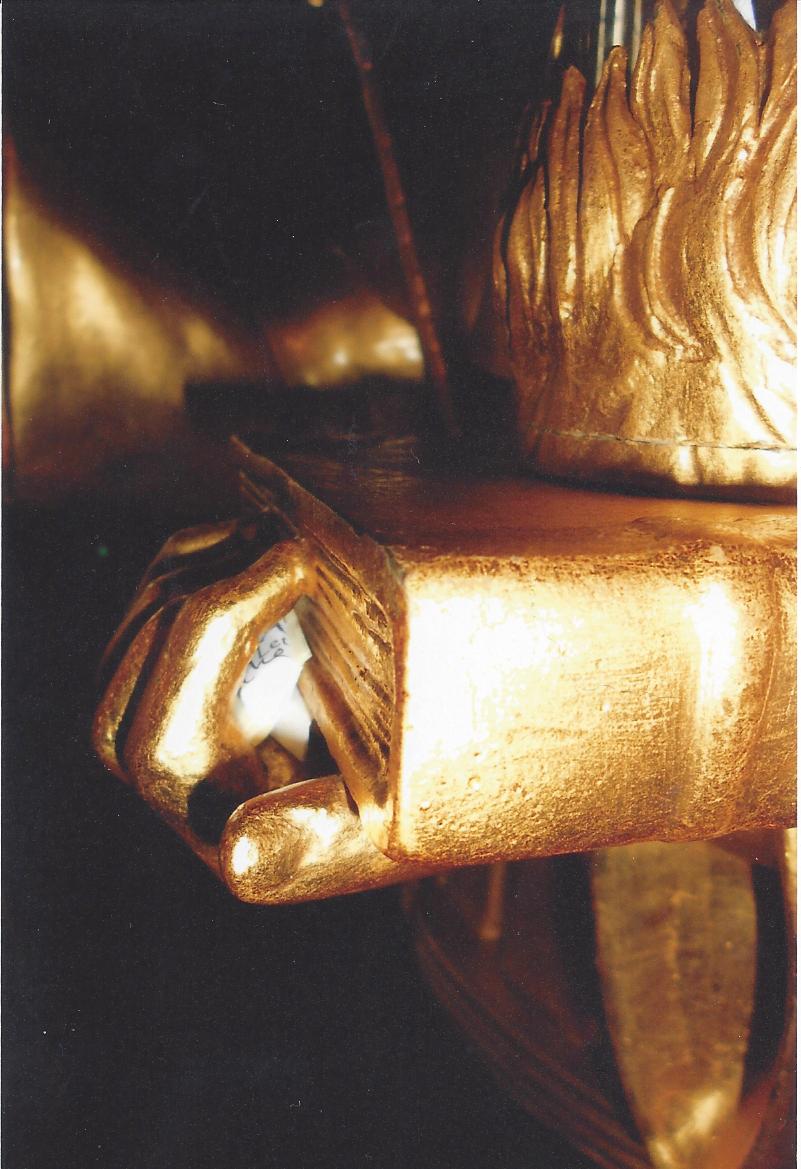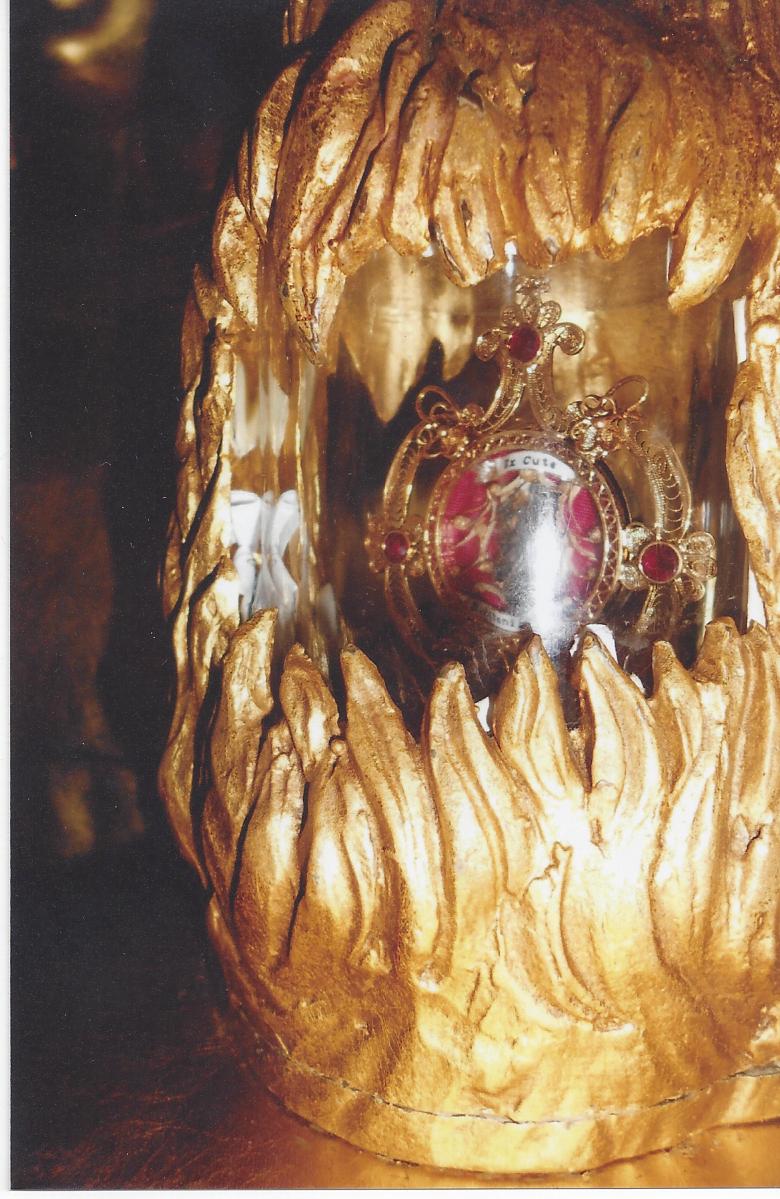The Shrine of St. Anthony
12290 Folly Quarter Rd, Ellicott City, MD 21042

1. The reliquary of St. Anthony in the chapel at the Shrine of St. Anthony, 12290 Folly Quarter Rd, Ellicott City, MD 21042. In the narthex of the chapel
is the reliquary of St. Anthony of Padua. This gold leafed bust depicts the saint in the blazing flame of the Holy Spirit. St. Anthony was known for
his ability to preach to the people during the Cathar heresy as inspirted by the Holy Spirit.
 |
2. Sant' Antonio was a Franciscan monk from Portugal who was much beloved in Italy.
This is a closeup of the bust in the chaple of the Shrine of St. Anthony, Ellicott City, Maryland. |
|
3. This photo shows a detail of the hand of St. Anthony clasping a book on the statue. This closeup reveals
something else. Near the statue is a container in which the faithful may place petitions requesting St. Anthony's
intercession with God. The Franciscan brothers include these petitions in their prayers. St. Anthony is now
commonly known as the "miracle-worker." According to the Shrine, hundreds of thousands of people each year send the friars petitions for the heavenly intercession of St. Anthony. He is especially well known as the "finder of lost things." However, one of the faithful has decided to slip a copy of her/his petition directly into the saint's hand. This is something that is done in folk Catholicism. Petitions may be tucked at different places around, under, or actually in the hand of a statue. Several old pieces of folk magic in Italy actually suggest this action.
|
 |
 |
4. This photo shows a detail of statue of St. Anthony which holds a "precious first-class relic of the saint." The
relic is a small piece of petrified flesh removed from his sarcophagus in Padua, Italy, in 1995. The friars in Padua sent this relic to the friars of Ellicott City in 1998. As the website of the Shrine of St. Anthony states, "Catholics venerate, or pay respect to, relics as remembrances of a saint whose human body was once a 'temple' of the Holy Spirit."
The flames of the statue are supposed to indicate how St. Anthony was inspired by the Holy Spirit. |
Photos copyright September 2014 by Myth Woodling
Who was St. Anthony?
St. Anthony and the Divine Child
Aradia home page

